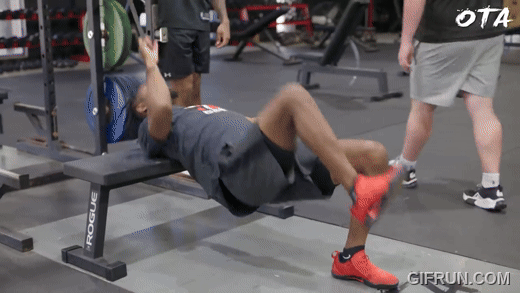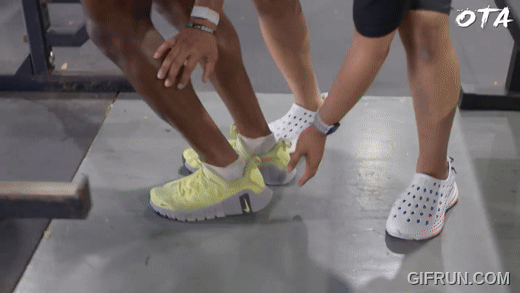Football Strength Training featuring Five Four Performance: A Complete Approach to Developing Power and Speed
Football is a demanding sport that requires athletes to possess not only strength and endurance but also explosive power and speed. To achieve this, a well-rounded strength training program is essential, and at Five Four Performance, the focus is on maximizing performance through a combination of acceleration training, posterior chain activation, and injury prevention. In this blog post, we’ll take a closer look at a football strength training session led by Coach Usama of Five Four Performance. This session complements prior acceleration work, engages the posterior chain, and targets tissue health, ensuring athletes are ready for an explosive season ahead.
Strength Session Overview
The football strength training session at Five Four Performance focuses on complementing previous acceleration training, which is crucial for maximizing a player’s speed and agility on the field. Acceleration training builds the foundation for an athlete’s quick starts and explosive movements, and the strength training session helps build the muscle power necessary to sustain that speed over longer distances.
In this particular session, athletes work on exercises like step-ups and explosive movements designed to improve strength and power while maintaining tissue quality. The emphasis is not just on lifting heavy weights but on performing movements that mimic the demands of football. This method ensures that athletes can maintain their speed, prevent injury, and recover properly during the offseason.
One of the key takeaways from this session is the focus on developing force and power through step-ups. Step-ups engage multiple muscle groups, including the quads, hamstrings, and glutes, helping to simulate the explosive power required for sprinting and cutting movements on the field. Additionally, explosive movements like jump squats and box jumps increase the athlete’s vertical power, which is essential for both offensive and defensive plays in football.
Warm-Up
Before diving into the intense exercises, Coach Usama makes sure to start the session with a proper warm-up that prepares the athletes for the physical demands ahead. Instead of focusing on traditional ground-based mobilizations, the warm-up is centered around dynamic movements designed to activate the muscles and increase blood flow.
The warm-up includes exercises like hip CARs (Controlled Articular Rotations) and fascia tissue training. CARs help improve mobility and flexibility in the hips, which are essential for explosive movements like sprinting and cutting. Fascia tissue training targets the connective tissue surrounding muscles, ensuring that the muscles can work efficiently during high-intensity movements.
Posterior Chain Activation
Once the warm-up is complete, the athletes begin their workout with exercises designed to activate the posterior chain—the muscles along the back of the body, including the glutes, hamstrings, and lower back. These muscles are critical for producing power during sprinting, jumping, and other explosive movements in football.
The first exercise of the day is the single-arm, single-leg glute bridge, which focuses on engaging the glutes, hamstrings, and lats (latissimus dorsi). This exercise is essential for improving hip extension, which is a key movement pattern in football. By targeting both the glutes and lats, athletes can better stabilize their core and generate more power when sprinting or pushing off the ground.

Coach Usama emphasizes the importance of keeping the muscles engaged and focusing on proper technique. He explains the concept of fascial tissue, comparing it to the skin of a sausage. If the fascia (the connective tissue surrounding the muscle) is too tight or too loose, it can hinder the muscle’s ability to function properly. This analogy highlights the importance of activating the posterior chain and ensuring that the fascia is properly aligned for optimal muscle performance.
The exercise is performed with the athlete lying on their back, placing one foot on a bench or elevated surface while raising the opposite arm. By driving through the heel of the elevated leg and simultaneously engaging the opposite lat, the athlete activates the entire posterior chain. The goal is to contract the muscles as one cohesive unit to improve functional strength.
Achilles and Explosive Step-Ups
The next part of the session focuses on improving ankle stiffness and explosiveness, two key components for football performance. The first exercise in this segment is the Achilles overcoming isometric, which trains the Achilles tendon to stay stiff during acceleration.
The Achilles tendon is essential for generating force when sprinting, jumping, or changing direction. If the tendon isn’t stiff enough, it can lead to inefficiency in movement and a loss of power. To train the Achilles tendon, athletes perform an overcoming isometric, which involves driving their foot into a stationary object (like a rack) while maintaining stiffness in the ankle. This movement simulates the force generated during a sprint or jump and helps increase the speed and explosiveness of the athlete’s movements.

In addition to the Achilles training, the session includes reactive step-ups, which focus on improving explosive power through quick, controlled movements. These step-ups involve stepping up onto a box or bench with one leg, then driving through the heel to explosively stand tall before stepping back down. The key to this exercise is speed and control—athletes should perform the movement quickly, focusing on driving with their glutes and quads to generate power while maintaining balance and form.
This combination of Achilles strengthening and reactive step-ups ensures that athletes can generate maximum force during their strides, leading to faster acceleration and improved speed on the field.
Core and Finishing Exercises
As the session winds down, the focus shifts to core strength and tissue quality work. A strong core is vital for maintaining stability and balance, especially during high-intensity movements in football. Core exercises like Nordic curls and Copenhagen holds are used to improve the stability and strength of the athlete’s core and lower body.
The Nordic curl is a challenging exercise that targets the hamstrings. Athletes lower themselves to the ground in a controlled manner while maintaining tightness in their core, ensuring that they’re engaging the hamstrings and not relying on their upper body to complete the movement. This exercise helps build strength and control, which is crucial for preventing injury during sprinting and cutting.

The Copenhagen hold is another core-focused exercise that targets the adductors (inner thigh muscles), glutes, and core. Athletes perform this exercise by holding a side plank position with their top leg elevated on a bench. The goal is to drive the hip up, squeeze the core, and hold the position for 20-30 seconds. This movement improves stability and strength in the lower body, which helps with agility and quick direction changes on the field.
The session concludes with exercises like soleus calf raises, which target the muscles of the lower leg, helping to build strength and endurance in the calves. These exercises are essential for improving overall lower-body strength and reducing the risk of injury.
Conclusion
The football strength training session at Five Four Performance offers a comprehensive approach to improving athletic performance. From posterior chain activation to Achilles strengthening and explosive movements, each exercise is carefully selected to maximize power, speed, and tissue health. The session emphasizes the importance of building strength and mobility, preventing injury, and fostering a supportive training environment. By incorporating these principles into their offseason routine, athletes can return to the field stronger, faster, and more explosive than ever before!
